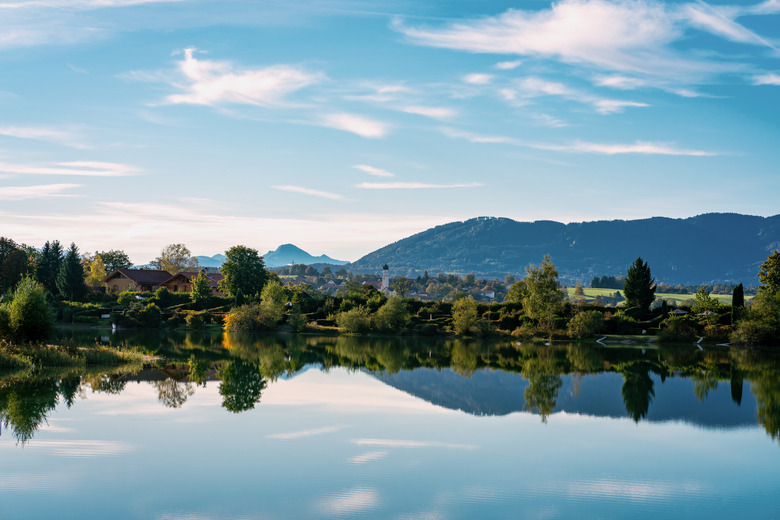How To Protect Water Bodies
Water is necessary for life. Water resources must be protected to prevent illness in humans and to conserve bodies of water for years to come. States have various programs that ensure water sources used for consumption will stay clean. An individual working along, or on, a body of water can ensure he is protecting the water by following state regulations for protected water bodies. A concerned individual is also able to protect water by changing a few daily habits.
Applying to the State
Step 1
Find the classification for your body of water. Often states create categories to distinguish between large and small bodies. When an individual plans to add a structure or perform work on, or near, these water bodies, he must gain a permit from the state. Classifications take into account the size and use of the water body. Often they include rules protecting populations of fish and other life.
Step 2
Obtain a permit application. Some states, such as New York, provide an application for download via the official state website. Other states require you to visit your local government offices.
Step 3
Submit a completed permit application. Your application will detail the work you are planning along the body of water in question. States will ask you for assurance of safe environmental practices. Large projects may require state inspections, but this is often reserved for industrial-sized projects.
Application processing times vary by state, so plan ahead and get your application in early.
Step 4
Follow state procedures for keeping the body of water clean. States outline dumping regulations and maximum pollutant levels to moderate the amount of run off from building projects. These regulations are intended to protect the water from contamination.
Everyday Water Protection
Step 1
Conserve your water. Taking short showers and fixing leaky faucets are two ways you can conserve local water sources. Rain barrels are another outlet for water conservation. The collected rainwater can be used to hydrate gardens and house plants.
Step 2
Use a composting system in your garden. The chemicals in synthetic fertilizers have the potential to harm local water bodies, as chemicals are absorbed by the soil and eventually filtered into nearby water sources. Composting puts kitchen scraps and yard refuse to good use. And finished compost fertilizes plants without adding hazardous materials to the water.
Step 3
Use only as much water as you need. Water used to boil vegetables can be strained and reused in soup broth or to water house plants. Use less water to wash clothes — a little goes a long way in the washing machine. Do dishes by hand and only wet the sponge when needed to save on water use in the dishwasher.
Cite This Article
MLA
Ross, Tiffany. "How To Protect Water Bodies" sciencing.com, https://www.sciencing.com/protect-water-bodies-8064261/. 22 November 2019.
APA
Ross, Tiffany. (2019, November 22). How To Protect Water Bodies. sciencing.com. Retrieved from https://www.sciencing.com/protect-water-bodies-8064261/
Chicago
Ross, Tiffany. How To Protect Water Bodies last modified March 24, 2022. https://www.sciencing.com/protect-water-bodies-8064261/
